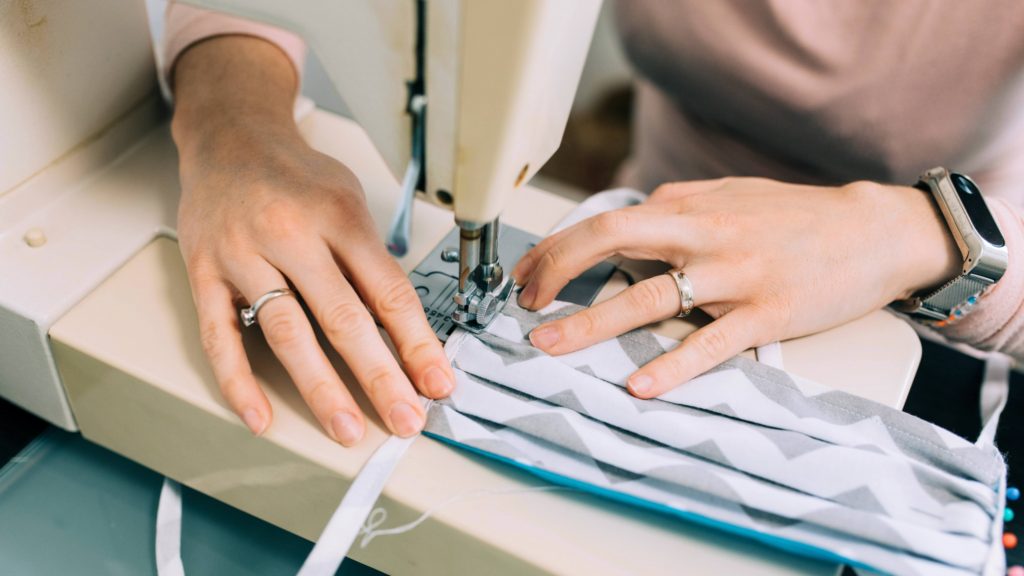-
COVID-19: Mayo Clinic expert answers questions about masks after CDC updates its recommendation

The Centers for Disease Control and Prevention (CDC) is recommending people wear nonmedical cloth masks while in public to decrease the risk of COVID-19 transmission from person to person. The cloth masks should:
- Fit snugly but comfortably against the side of the face.
- Be secured with ties or ear loops.
- Include multiple layers of fabric.
- Allow for breathing without restriction.
- Be able to be laundered and machine-dried without damage or change to shape.
In this Q&A, Dr. Gregory Poland, a COVID-19 expert, answers questions about public masking, which he calls an important strategy to add as everyone continues to follow recommendations of social distancing and frequent hand-washing.
Watch: Dr. Gregory Poland answers questions about public masking.
Journalists: Sound bites with Dr. Gregory Poland are in the downloads at the end of the post. Please courtesy "Gregory Poland, M.D. / Vaccine Research Group / Mayo Clinic."
Q. Why is the CDC recommending that people wear cloth masks in public?
A. The reason to do this, even though they're not quite the same efficacy as medical masks, is that they do have some level of efficacy. They are not only a way of decreasing breathing in the virus, primarily through large respiratory droplets, but also a behavioral reminder that there's a pandemic and life is not the same right now ― and a reminder not to put our hands in our eyes nose or mouth until we've washed our hands.
If I had COVID-19, I might not even know it. It's not like I'm sneezing and coughing, and have a fever. It's apparent that you can transmit the virus when you are asymptomatic or presymptomatic. So in that case, we're preventing me from exhaling the virus or respiratory particulate matter out onto the public and into the air where others might get infected. The other side of the coin, if you will, is protecting those who are not infected from becoming infected by breathing in air contaminated with virus or respiratory particulate matter.
Q. What's the difference between cloth masks and medical masks, such as an N95 mask?
A. The idea behind an N95 mask is it has a filtering ability down to, and actually below, the size of SARS-CoV-2, the virus that causes COVID-19. So the coronavirus is about 0.12 microns in diameter and N95 (masks) protect down to 0.1 microns, with 95% efficiency, which is where it gets its name.
We don't want the public to think that the recommendation is for medical masking. That would be detrimental to us as a society, health care providers and patients who are sick with the disease need those masks.
Q. What type of fabric is best to use?
A. There have been some studies looking at types of fabric. For example, high-quality, woven tee shirts tend to be better than for example, scarves. Cotton towels that are thicker with tight weaves tend to be better. So there are some materials that appear to be better than others in the few studies that have been done.
Q. What are the potential dangers in terms of using a mask?
A. Once a mask gets wet, maybe from our exhalation, it really begins to decrement in effectiveness in filtering any sort of respiratory particulate matter. So that's one thing, it would need to be changed. The second thing is you do yourself no favor if you wear a mask and then touch the mask, either to adjust it or take it off in the wrong way. As medical professionals, we're taught how to put a mask on and how to take a mask off, but this would be unfamiliar to the public. You take it off through however you're holding it on your head. You do not touch the front of the mask. And then that mask needs to be washed before it would be used again. Just washing with soap and water in your laundry machine is quite satisfactory. You don't need to go to any extreme lengths.
The CDC has more information on cloth masks, including a video on how to make your own face covering. That's also where you'll find the latest updates on COVID-19.
Check the CDC website for additional updates on COVID-19. For more information and all your COVID-19 coverage, go to the Mayo Clinic News Network and mayoclinic.org.







